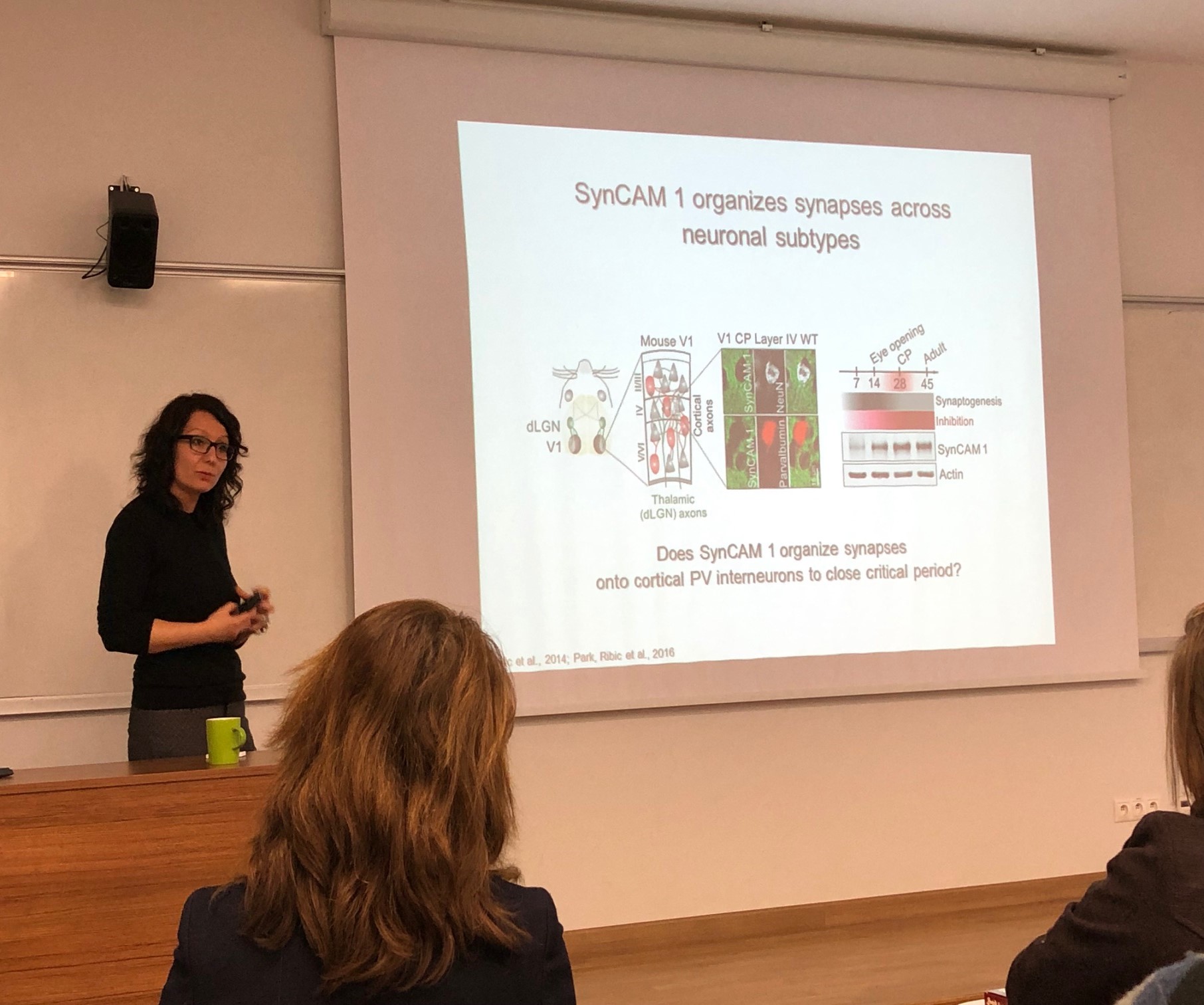Dr. Adema Ribic conducted a seminar at UMRAM/Aysel Sabuncu Brain Reserch Center on January 31, 2019. She is a researcher from Tufts University School of Medicine, Department of Neuroscience. The title of the seminar was “Synaptic Brakes on Neuroplasticity: Mechanism of Critical Period Closure in Visual Cortex”.
Abstract: Connections between nerve cells in the brain, termed synapses, are formed using precise genetic programming and are remodeled with experience throughout lifetime. Synaptic remodeling is a highly regulated process, prominent in the developing, young brain when plasticity is high. Brain plasticity in mammals tapers off in adulthood, paralleling the maturation of inhibitory neurotransmission and a steady increase in the expression of nerve growth inhibitors. The goal of my research is to identify mechanisms that act at the synapse to direct synaptic remodeling and plasticity. My recent research demonstrated a key role of Synaptic Cell Adhesion Molecule 1 (SynCAM 1/Cadm1) in maturation and plasticity of visual cortex. SynCAM 1 is a synaptic organizer that selectively controls development of subcortical, thalamic inputs onto Parvalbumin (PV+) inhibitory interneurons in the visual cortex. Loss of SynCAM 1 in PV+ interneurons retards the maturation of cortical inhibition and mice deficient in SynCAM 1 show increased visual plasticity at all ages, indicating that synaptic adhesion directs brain maturation. Even a brief loss of SynCAM 1 in PV+ interneurons upregulates plasticity in the adult brain, suggesting that plasticity is actively restricted through SynCAM 1 in adults. These results identify a synaptic locus for closure of developmental windows of plasticity, as well as a new synaptic factor that restricts adult plasticity.
About the speaker: Dr. Ribic received her PhD in Molecular Biology and Neuroscience from the University of Göttingen in Germany. She has done a postdoctoral fellowship at Yale University and is currently a Research Associate at Tufts. She has published in journals such as the Journal of Neuroscience, Journal of Comparative Neurology, and Behavioral Brain Research among others.
